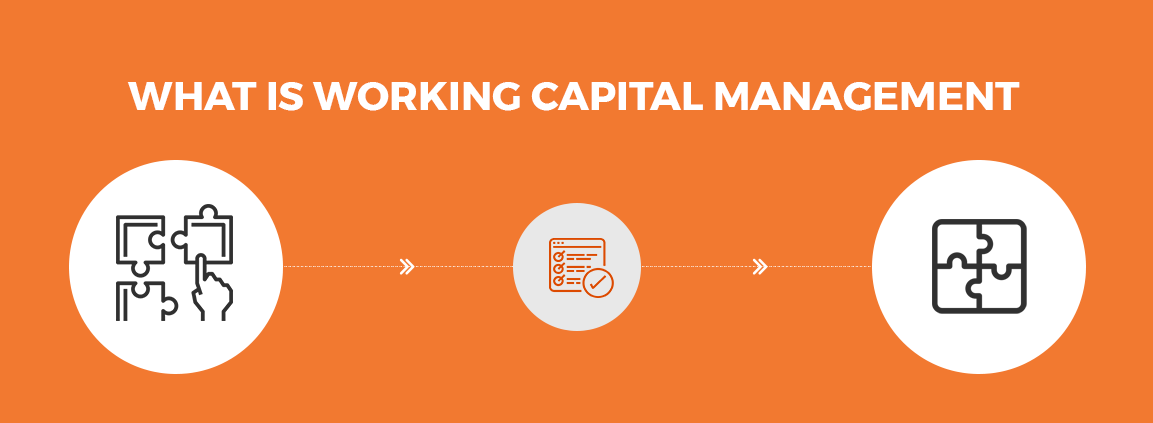Just got your business off the ground? Now that your business is up and running, it’s time to look into working capital management.
Working capital management is a strategy used to keep track of the working capital of the business with the help of your balance sheet. Basically, it’s done to try and keep a business in good health. Managing working capital isn’t easy. There are many things that you need to understand about it to do it yourself.
In this post, we’re going to talk about the basics and benefits of working capital. You’ll also learn about working capital ratios and the answers to queries like what is term loan and working capital.
The Basics and Benefits of Working Capital Management
To understand working capital management, we have to discuss working capital first. There’s also a relation between working capital and term loans, which confuses a lot of people.
So, let’s first tackle what is a term loan and working capital for businesses. Only after that can we talk about how to manage working capital.
Defining Working Capital & Term Loans
Also known as Net Working Capital (NWC), this is the difference between the current assets and inventories of raw materials and finished goods and current liabilities of a company.
It’s a measure of a business’s liquidity, short-term financial health, and operational efficiency at a fixed interest rate.
A company that has good working capital has great potential to grow. That’s why working capital deserves proper management.
Now, as I said before, many have questions about what a term loan is and working capital. You already know what working capital is, so let’s move on to the term loan.
A term loan is a bank loan that has a specified repayment schedule. Term loans are often used by small businesses with good finances.
Businesses that get a term loan often use it to fund equipment needs. A term loan can also be used for working capital and can be paid off between 1 and 25 years.
So, to explain why people ask what is term loan and working capital, the former can support the latter. There are basically times when you will need to take out a term loan to fund your working capital and then repay the loan.
But then another question appears. There’s also something called a working capital loan, so why not get it instead?

Working Capital Loan vs. Term Loan
Term loans are usually granted for income-generating capital assets. The repayment for term loans for short-term assets is based on the estimate of earnings and cost of production.
Meanwhile, a working capital loan is given so that businesses can meet their daily requirements.
There are many benefits to working capital management, whether a business ends up getting a working capital loan or short term loan.
As mentioned, working capital management is an accounting practice that involves balancing a business’s assets and liabilities. It can help a business control its expenses while also maximizing profit.
It helps to see how it works to understand this. So, let’s go over the ratios people use for it.
Working Capital Ratios
Working capital management involves three ratios that are essential to a business. The basic one is the working capital ratio.
This divides existing assets and current liabilities. It tells you if a business has enough cash flow to cover financial needs such as short-term debts and costs.
But that’s only one of the ratios. The others are also useful in checking the health of a business.
Here, we’ll discuss the three working capital ratios — the working capital ratio, the collection ratio, and the inventory turnover ratio.
The Working Capital Ratio
This is the current ratio and it’s calculated like this:
- Current assets / current liabilities = working capital ratio
Again, this is a good way to tell if a business is healthy. Different industries have different average ratios, though.
A ratio below 1.0 is often seen as a sign of an unhealthy business. It often means the business can't meet its short-term obligations.
On the other hand, ratios between 1.2 and 2.0 are good. Still, one that goes beyond 2.0 could mean that the business isn’t using its assets to grow revenues effectively.
The Collection Ratio
This ratio shows how a business manages its account receivables. You can get it this way:
- Product of the number of days in an accounting period x average amount of outstanding accounts receivables / total amount of net credit sales = collection ratio.
The ratio will provide a business the average number of days it takes to receive payment after a sales transaction on line of credit. As much as possible, the collection ratio must be low.
A low collection ratio means that the billing department is effective in getting monthly payments while clients are effective in paying their bills on time.
The Inventory Turnover Ratio
The inventory ratio shows how fast the company’s inventory is moving. Here’s how you get it:
- Revenues / Inventory cost
Inventory management is vital in business operations. You need it for your business to run efficiently while keeping your working capital up.
A low ratio means the inventory level is high. Meanwhile, a high ratio often means your inventory is low.
The Benefits of Working Capital Management
At some point, you may need to take out a few small business loans here and there. However, you want to avoid it as much as possible, to keep debts down.
Anyway, now that you know what a term loan is and what working capital is, it’s time to learn why you should do working capital management. Let’s go over the reasons it’s useful.

Guarantees Liquidity
With working capital management, you can ensure liquidity for your real estate business. That’s by keeping track of account receivables & account payable's and stock & debt management.
Moreover, working capital ensures there’s enough liquid cash available to pay short-term debts and operational costs. This way, there’s no need to sell any existing assets just to cover those.
Prevents Interruptions In Operations
We’ve discussed the working capital ratios, and with that comes ratio analysis. This allows managers to do planning and business operations in the most effective way possible.
So, with working capital management, as business owners, you can avoid possible issues that would affect your business operations.
Enhances Profitability
A successful business is profitable. Achieving that isn’t just about marketing to make people buy your products and services -- it’s also about what goes in the workplace.
That’s how working capital management boosts profitability. With proper working capital management, you can look forward to better and more effective inventory management.
That will further improve business operations and lead to more profit.
Improves Financial Health
When you apply for a working capital loan, lenders look into your business’s cash conversion cycle. And if you don’t have good cash flow, chances are your application will get turned down.
So, whether or not you’re looking to get a loan for your company, it’s crucial that you do things that can improve your business’s financial health from the very beginning.
One way to do that is through working capital management, since it often means better cash allocation. That helps businesses stay solvent and keep better finances.
Additionally, proper cash flow helps companies evade legal troubles that could arise when there’s a lack of working capital.
Adds Value
As the years go by, you want your business to grow in value. Managing your gross working capital can improve the financial health and operation of your business, adding value to it.
It can also help your company stand out among the rest. And to add to that, your healthy finances may also lead to a stronger sense of respect for your business in your industry.
Final Thoughts on What Is Working Capital Management
Working capital management is an efficient tool in business operations ao as your credit card. It allows the proper allocation of a company’s existing assets and liabilities.
There are a lot of benefits that good working capital management brings, such as these:
- Adds value to the business,
- Improves financial health,
- Enhances profitability,
- Prevents business operation interruptions, and
- Guarantees liquidity.
However, to manage your working capital, it’s important that you know what a term is loan and what working capital is, as well as the working capital ratios.
The more that you know about how working capital and working capital management works, the better for your business.
Do you need help with your working capital? Contract Trust Capital today!
And if you have any questions left about what is working capital management, call 866-458-4777 and speak with a specialist.


 (866) 458-4777
(866) 458-4777

 Paul Kendall
Paul Kendall





